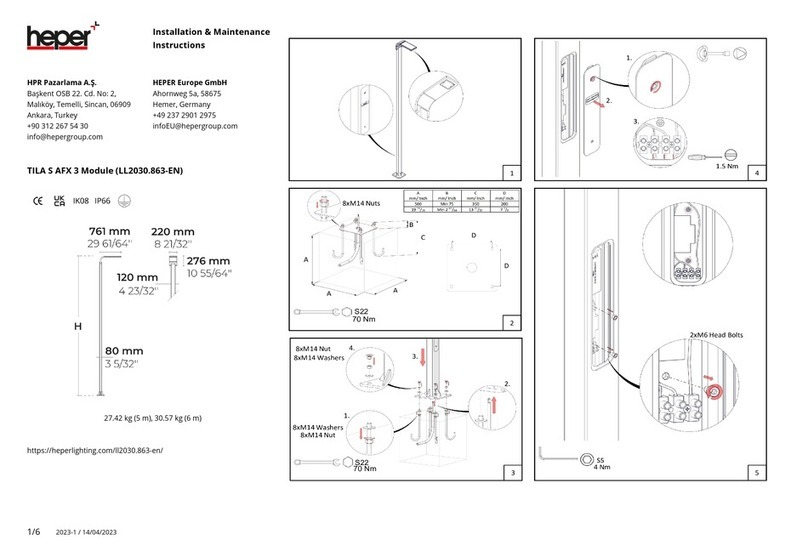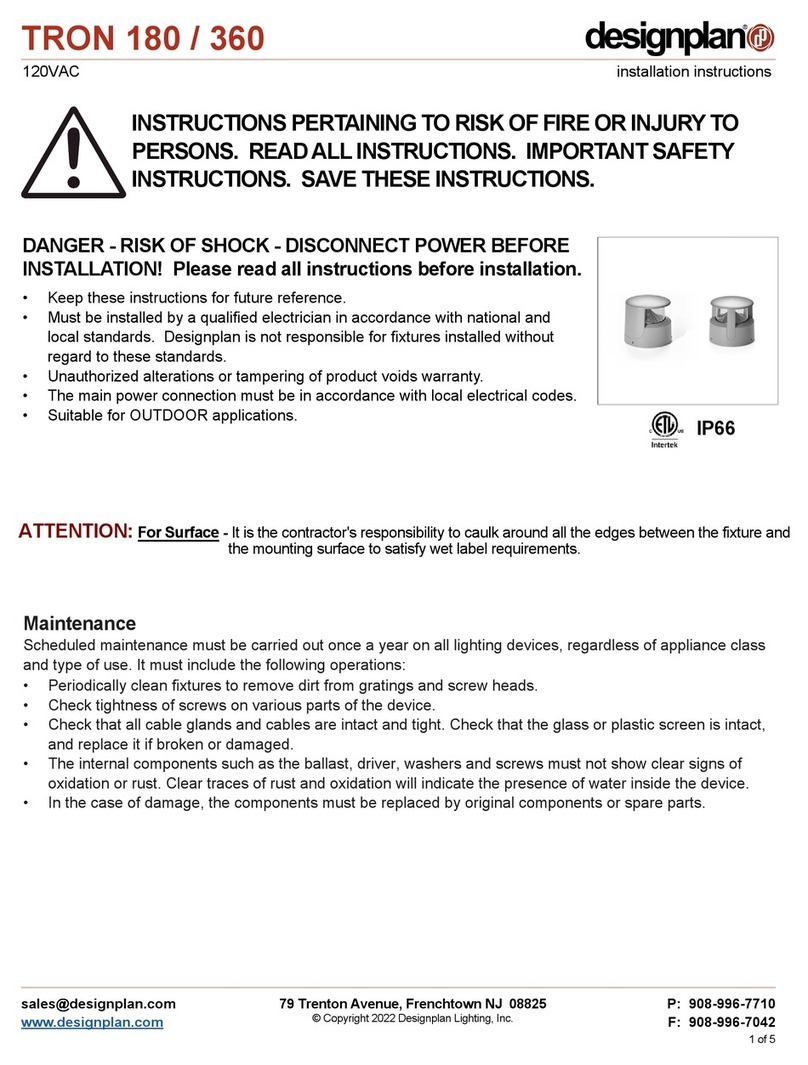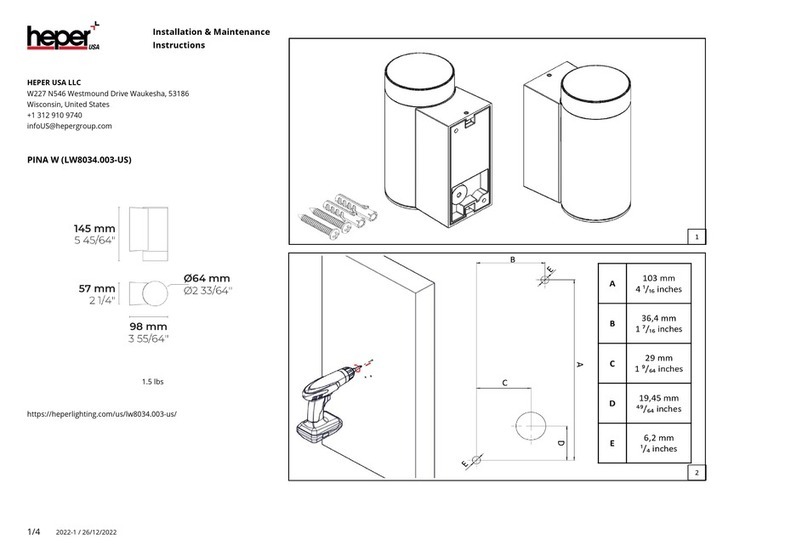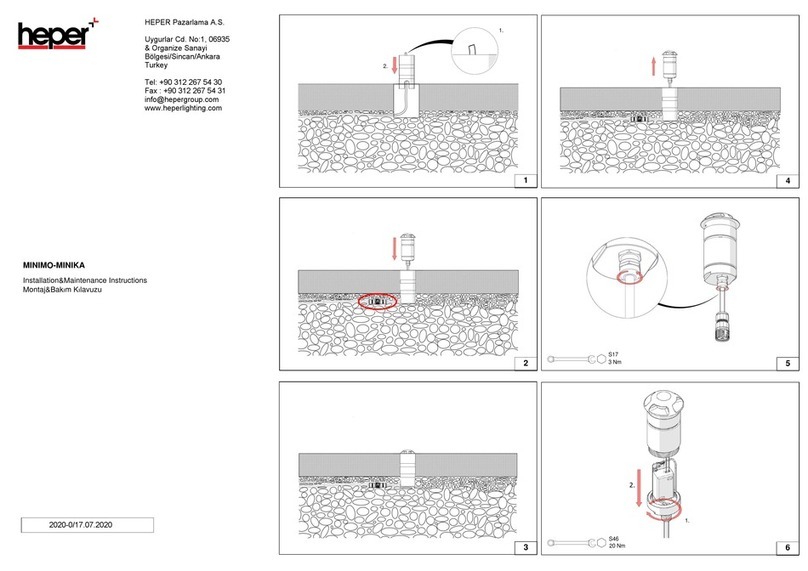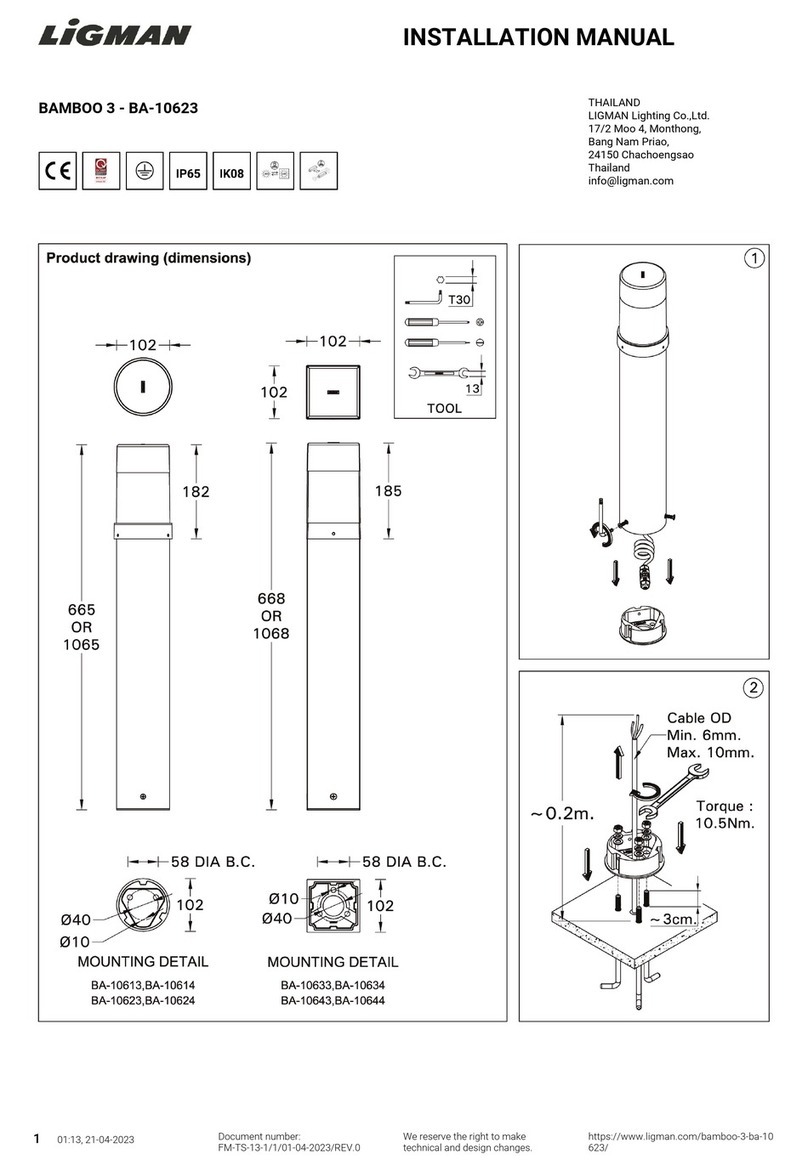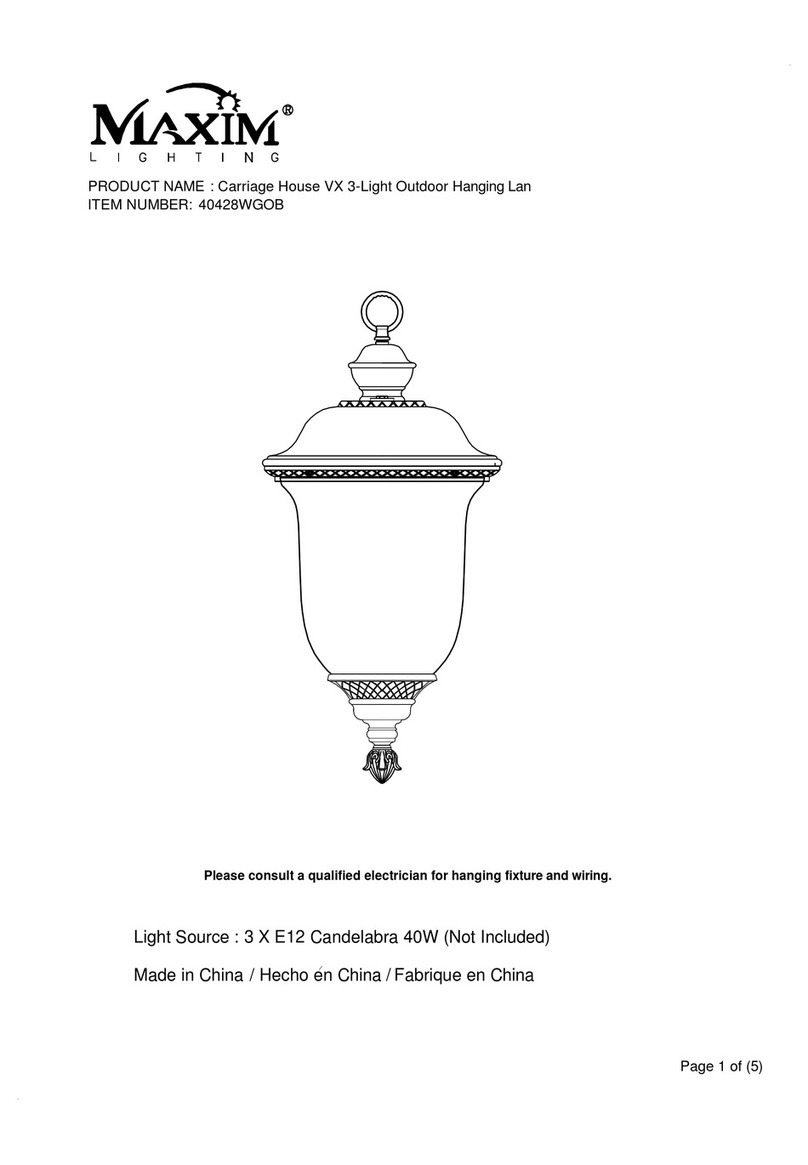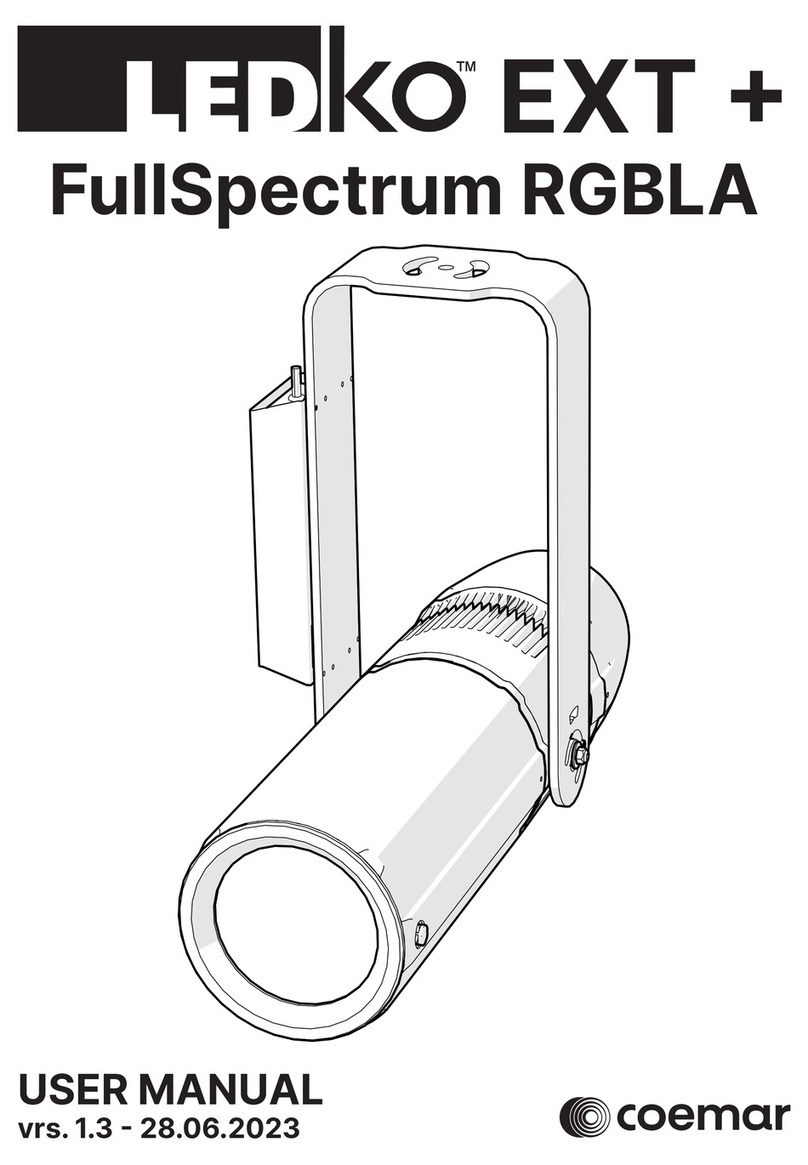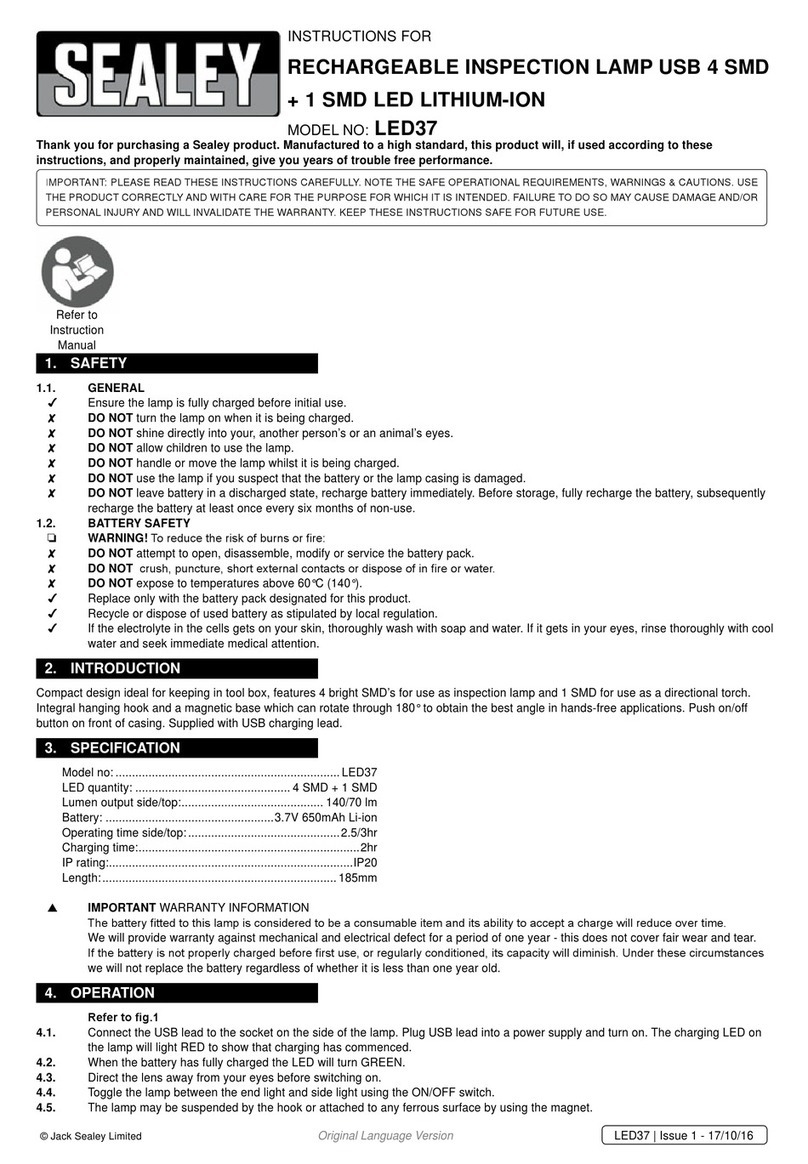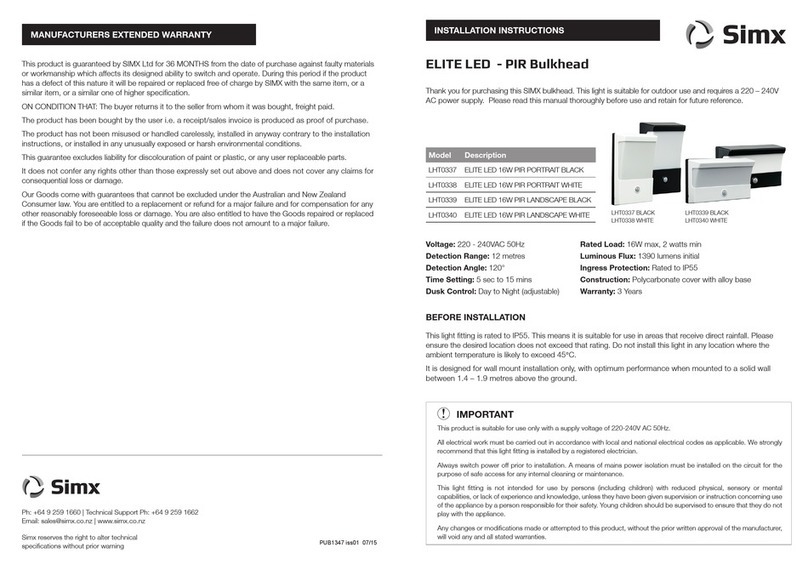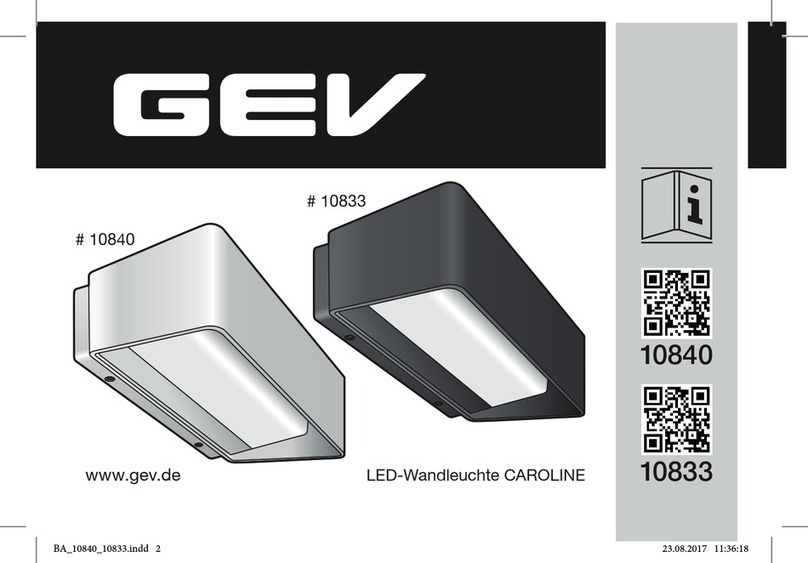Congratulations on having purchased a coemar product. You have assured yourself of a fixture of the highest quality, both in com-
ponentry and in the technology used. We renew our invitation to you to complete the service information on the previous page, to
expedite any request for service information or spares (in case of problems encountered either during, or subsequent to, installation).
This information will assist in providing prompt and accurate advice from your coemar service centre.
Following the instructions and procedures outlined in this manual will ensure the maximum efficiency of this product for years to
come.
Open the packaging and ensure that no part of the equipment has suffered damage in transit. In case of damage to the equipment,
contact your carrier immediately by telephone or fax, following this with formal notification in writing.
packing list
Ensure the packaging contains:
1 Panorama Cyc 250 C.
1 instruction manual
3 optical prismatic lenses
The Panorama Cyc 250 C. should be transported in its original packaging or in a coemar approved flight case.
During transportation, the packaging or flight case should ensure no movement of the unit.
Failure to do so may result in damage to the unit.
Fire prevention:
1. Panorama Cyc 250 C utilises a Philips MSD 250W/2 lamp or equivalent; the use of any other lamp is not recommended and
will null and void the fixture’s warranty.
2. Never locate the fixture on any flammable surface.
3. Minimum distance from flammable materials: 0,5 m.
4. Minimum distance from the closest illuminable surface: 2 m.
5. Replace any blown or damaged fuses only with those of identical values. Refer to the schematic diagram if there is any doubt.
6. Connect the projector to mains power via a thermal magnetic circuit breaker.
Prevention against electric shock
1. High voltage is present in the internals of the unit. Isolate the projector from mains supply prior to performing any function which
involves touching the internals of the unit, including lamp replacement.
2. For mains connection, adhere strictly to the guidelines outlined in section 7 of this manual.
3. The level of technology inherent in the Panorama Cyc 250 C requires the use of specialised personnel for all service applica-
tions; refer all work to your authorised coemar service centre.
4. A good earth connection is essential for proper functioning of the projector.
Never operate the unit without proper earth connection.
Protection against ultraviolet radiation
1. Never turn on the lamp if any of the lenses, filters, or the housing is damaged; their respective functions will only operate efficiently
if they are in perfect working order.
2. Never look directly into the lamp when it is operating.
Safety:
1. The projector should always be installed with bolts, clamps, and other fixings which are suitably rated to support the weight of
the unit.
2. Always use a secondary safety chain of a suitable rating to sustain the weight of the unit in case of the failure of the primary fixing
point.
3. The external surface of the unit, at various points, may exceed 150°C. Never handle the unit until at least 8 minutes have elap-
sed since the lamp was turned off.
4. Never install the fixture where unauthorised and untrained personnel may tamper with it.
5. Always replace the lamp if any physical damage is evident.
6. Never install the fixture in an enclosed area lacking sufficient air flow; the ambient temperature should not exceed 35°C.
7. A hot lamp may explode. always wait for at least 8 minutes to elapse after the unit has been turned off prior to attempting to
replace the lamp. Always wear suitable hand protection when handling the lamp.
Protection rating of the body against liquids and solids:
1. The fixture has an IP 44 protection rating; this indicates that a particle larger than Ø 1 mm cannot penetrate the unit and that it is
totally protected against showers of water.
The protection rating allows the fixture to be utilised in an exposed location in inclement weather as long as it is installed according
to the instructions located in section 7.2 “Installing the unit in exposed areas”.
3. Important safety information
2. Transportation
1. Packaging
3
English




